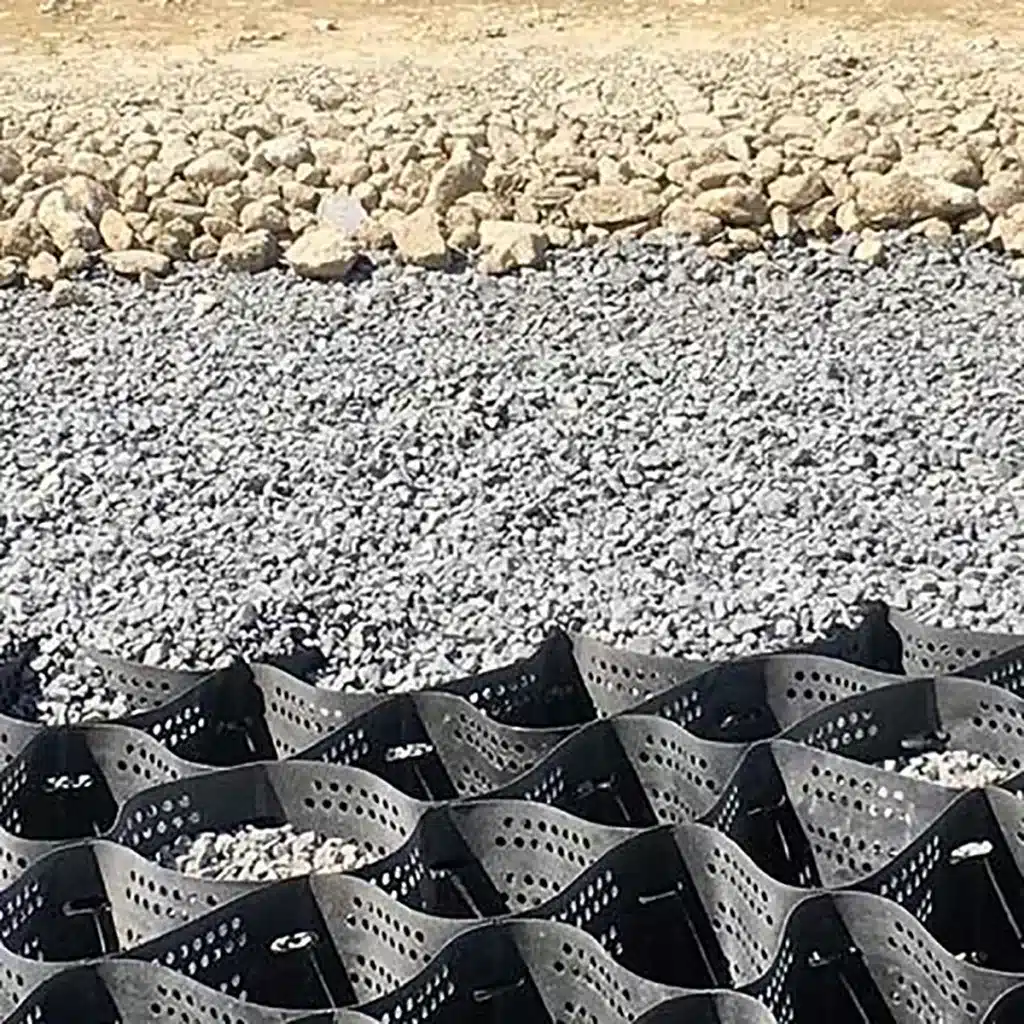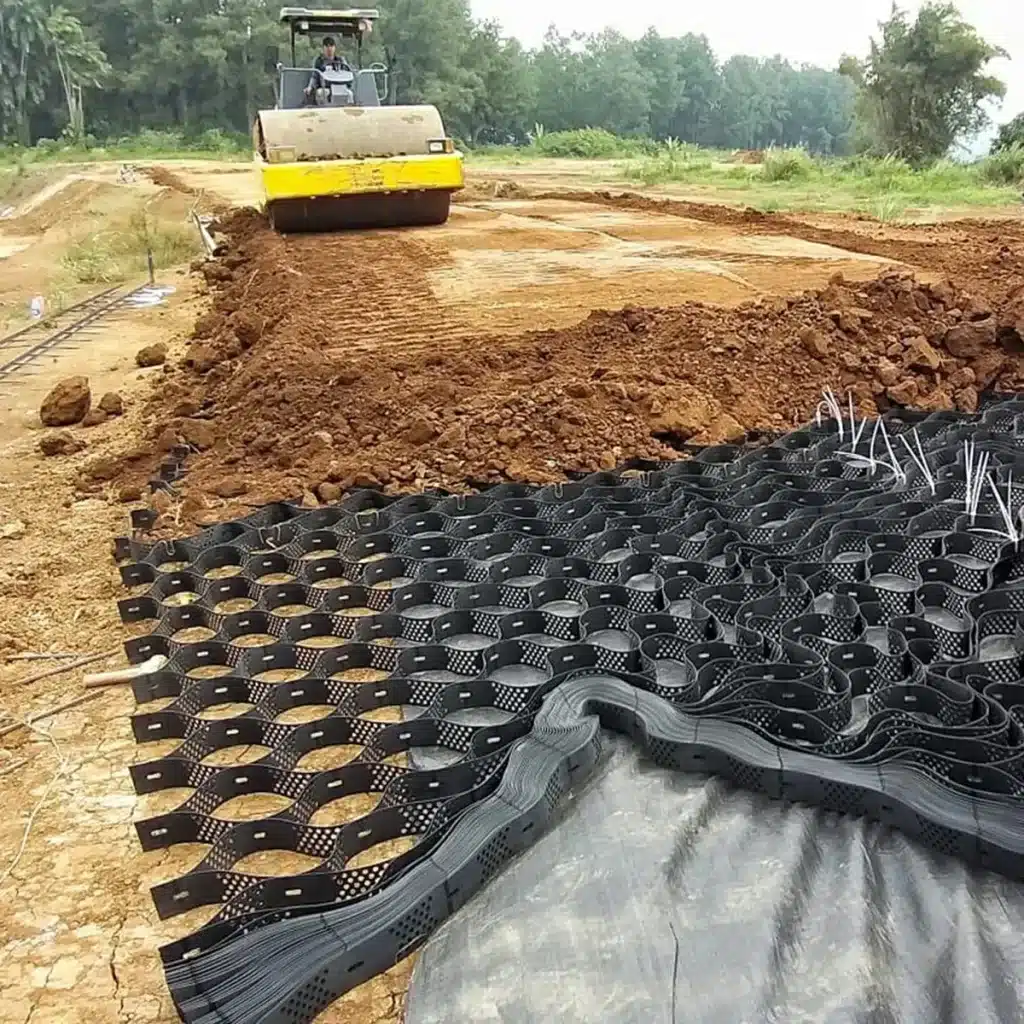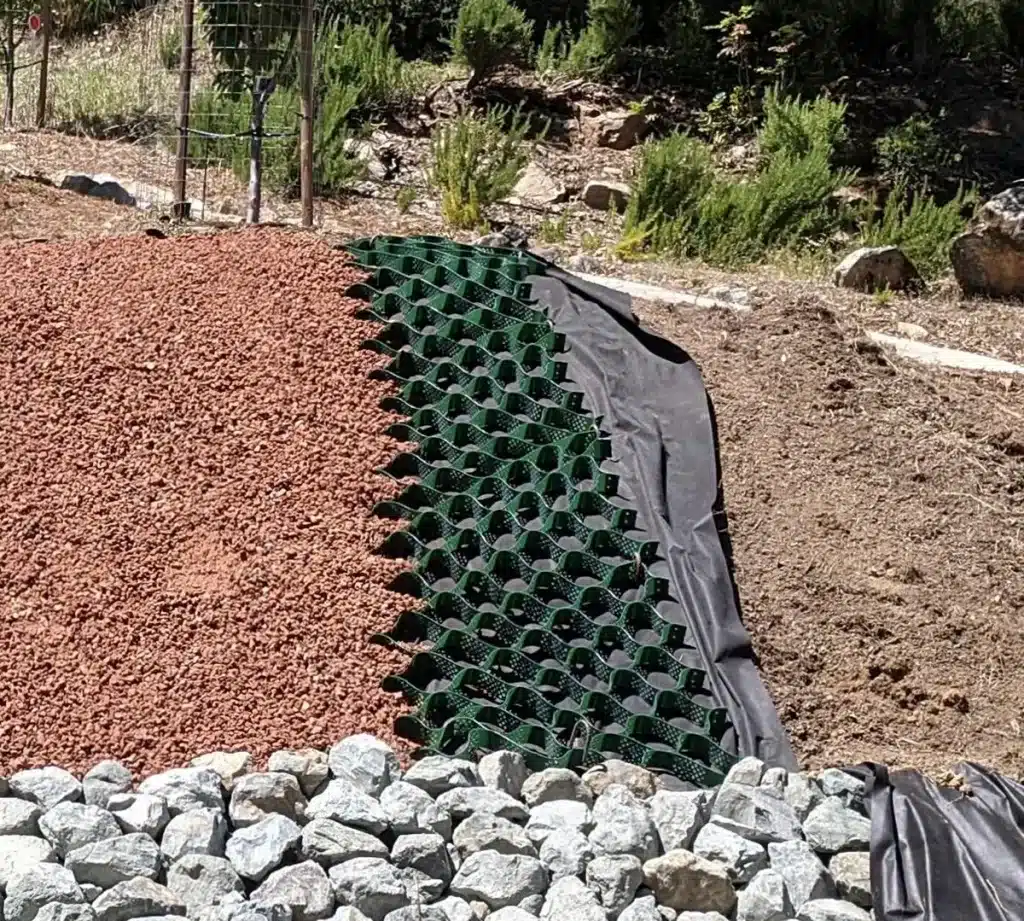+86-159 9860 6917
info@geofantex.com
geofantex@gmail.com
+86-400-8266163-44899
Geocells are an innovative and highly effective solution in the field of erosion control and soil stabilization. These honeycomb-like structures are made from high-density polyethylene (HDPE) or other polymeric materials, providing a robust and flexible method to prevent soil erosion and enhance the stability of various terrains. In this article, we will explore geocells as an erosion-resistant material, focusing on their applications, benefits, and installation process.
What is Slope Protection with Geocells?
Slope protection with geocells involves using these cellular confinement systems to reinforce and stabilize slopes, preventing soil erosion and landslides. Geocells create a three-dimensional network that confines the soil, reducing its movement and erosion caused by water and wind. This effectively controls erosion as the cells prevent movement of the infill. This method is particularly useful for steep slopes, embankments, and areas prone to heavy rainfall or other erosive forces. By anchoring the soil and distributing loads more evenly, geocells help maintain the integrity of slopes and prevent costly damage.

What to Fill Geocell With?
Geocells can be filled with various materials depending on the specific application and desired outcome:
- Soil: For landscaping and slope stabilization, geocells can be filled with local soil, providing a natural look while enhancing stability.
- Aggregate: Crushed stone, gravel, or sand can be used to fill geocells for road construction, base reinforcement, and load distribution. Angular rock, concrete, or vegetated soil can also be used to improve stability and performance.
- Concrete: In areas requiring extreme load-bearing capacity, geocells can be filled with concrete, creating a durable and solid surface for heavy-duty applications.
- Vegetation: For environmentally sensitive areas, geocells can be filled with soil and then planted with grass or other vegetation to promote natural growth and further stabilize the soil.
What is the Use of Geocell as Soil Stabilization and Soil Erosion Countermeasures?
Geocells are widely used to stabilize soil and prevent erosion by confining and reinforcing the soil within their cellular network. They offer versatile and effective properties for various applications:
- Soil Stabilization: By confining and stabilizing the soil within its cellular structure, geocells prevent soil displacement and improve load-bearing capacity. This makes them ideal for use in road construction, embankments, and foundation reinforcement.
- Soil Erosion Countermeasures: Geocells protect against erosion by reducing the impact of water flow and wind on the soil. They help maintain soil structure on slopes, riverbanks, and coastal areas, preventing landslides and sediment loss. The confinement system promotes vegetation growth, which further stabilizes the soil and reduces erosion.
How to Install Geocell?
Installing geocell involves several key steps to ensure effective performance:
- Site Preparation: Clear the installation area of debris, vegetation, and loose soil. Level the ground to provide a stable base for the geocell.
- Geocell Deployment: Unfold and expand the geocell panels over the prepared area. Secure the edges with stakes or anchors to hold the geocell in place.
- Anchoring: Use additional stakes or pins to anchor the geocell at regular intervals, ensuring it remains stable during filling and use.
- Filling: Fill the geocell with the chosen material (soil, aggregate, concrete, etc.), ensuring even distribution and compaction. For vegetation applications, fill with soil and plant grass or other vegetation.
- Finishing: Once filled, smooth the surface and perform any additional compaction as needed. Ensure the geocell is adequately covered and integrated with the surrounding environment.
Geocells are a highly effective erosion-resistant material, providing excellent solutions for soil stabilization and erosion control. They offer versatile applications, from slope protection to road construction, by confining and stabilizing various fill materials. Understanding the benefits and installation process of geocells can help in selecting the right erosion control method for your project. Whether you’re dealing with steep slopes, unstable soils, or areas prone to erosion, geocells offer a reliable and durable solution to maintain the integrity and stability of the terrain.



Get Free Sample
We’ll respond as soon as possible(within 12 hours)






















